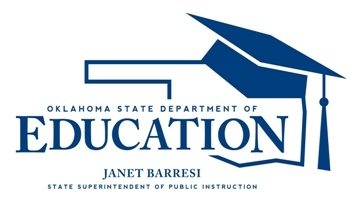Afterschool report shows high satisfaction but need for more programs
Oklahoma City (Oct. 17, 2014) — Parent satisfaction is high for afterschool programs in Oklahoma, but the demand for quality programs still exceeds the supply, according to a household survey commissioned by the Afterschool Alliance.
The 2014 edition of America After 3PM shows that 94 percent of those surveyed with children in an afterschool program are satisfied. The number of children who would participate in an afterschool program where available, though, exceeds the number of children currently enrolled in such programs in the state.
The survey included 30,000 American households and 200 in-depth interviews in Oklahoma. It found that 11 percent of Oklahoma students, 68,751 children, are enrolled in afterschool programs, slightly lower than in 2009, when the survey was last conducted. But 130,367 Oklahoma students are still without adult supervision in the afternoons. The parents of 230,198 Oklahoma children not already in an afterschool program say they would enroll their child if a program were available.
“After school is a crucial time for children who’s parents work outside of the home,” said State Superintendent of Public Instruction Janet Barresi. “We recognize students are learning all the time and that their opportunities outside of the school day and in the community are an important component to their school success. These programs often give them the real world connection to what they are learning in school and the relevance of their own experiences.”
Barresi cited the State Department of Education’s office of 21st Century Community Learning Centers and Parent and Community Engagement as being among the biggest factors for successful afterschool programs.
“These offices partner with schools and community organizations to ensure our most vulnerable students are cared for and still learning outside of school hours,” she said.
Afterschool Alliance Executive Director Jodi Grant said, “Oklahomans have made progress creating afterschool opportunities for their children, and can be proud of what the state has accomplished. But there’s no question that more work remains. Most parents in the state who want their child in a program can’t find one that works for them, and that needs to change. Quality afterschool programs keep kids safe, inspire them to learn, and help working families. Every Oklahoma family that needs an afterschool program should have access to one.”
Chuck Mills, Chairman of the State Chamber of Oklahoma and Co-Chair of the OK Workforce Youth Council , said, “It’s great that we’ve made progress on afterschool, but we’ve still got a long way to go. The unfortunate reality is that afterschool programs in the state reach only a fraction of the children and families who need them. Economic growth in our state depends upon a well-educated and skilled workforce. Quality afterschool programs are teaching kids the skills necessary to succeed in school and are helping prepare them for the future. We need to make sure we can keep up with the rest of the nation and that will require committing the resources necessary to grow afterschool programs and create the opportunities our children and youth urgently need.”
State survey findings include:
- 20 percent of Oklahoma children are unsupervised after school for an average of 6.6 hours per week.
- 37 percent of Oklahoma children in an afterschool program qualify for free- or reduced-priced meals.
- Oklahoma parents cited as their top five reasons for selecting an afterschool program: quality of care (91 percent), the hours meet their needs (90%), their child enjoys the afterschool program (90 percent), the program is a safe haven (88 percent) and knowledgeable and well-trained program staff (87 percent).
- 60 percent of parents agree that afterschool programs can help excite children about learning.
- 61 percent of parents agree that afterschool programs help children gain workforce skills, such as teamwork, leadership and critical thinking.
- 66 percent of Oklahoma parents agree that afterschool programs can help reduce the likelihood that youth will engage in risky behaviors, such as commit a crime or use drugs, or become a teen parent.
- The top five activities Oklahoma parents report are offered by their child’s afterschool program are opportunities for physical activity (82 percent), opportunities for reading or writing (73 percent), homework assistance (72 percent), beverages, snacks and/or meals (69 percent) and STEM learning opportunities (59 percent).
Read the national report and additional state reports here: http://www.afterschoolalliance.org/AA3PM/.
The Afterschool Alliance is a nonprofit public awareness and advocacy organization working to ensure that all children and youth have access to quality afterschool programs. More information is available atwww.afterschoolalliance.org.
|
 CASP
CASP
